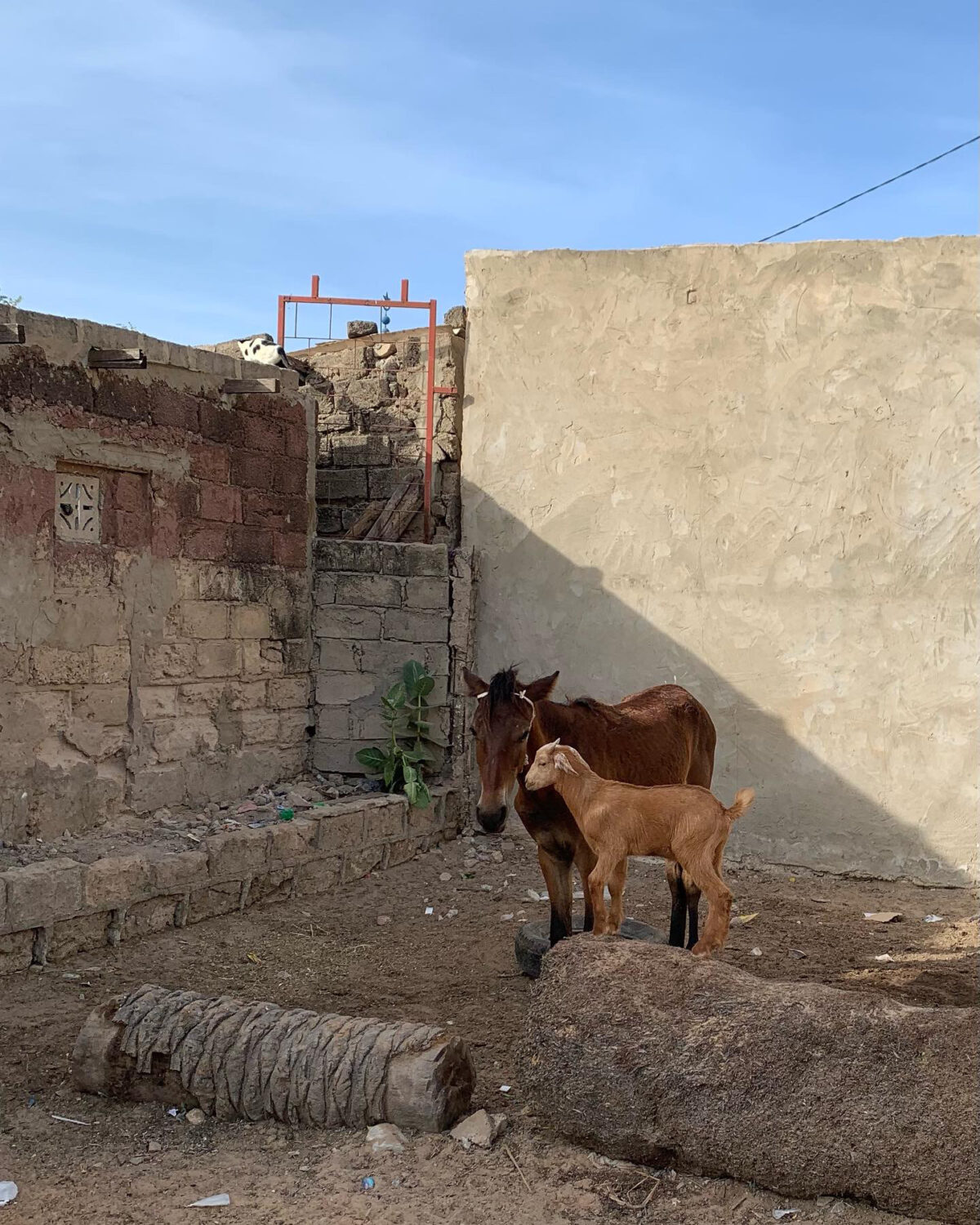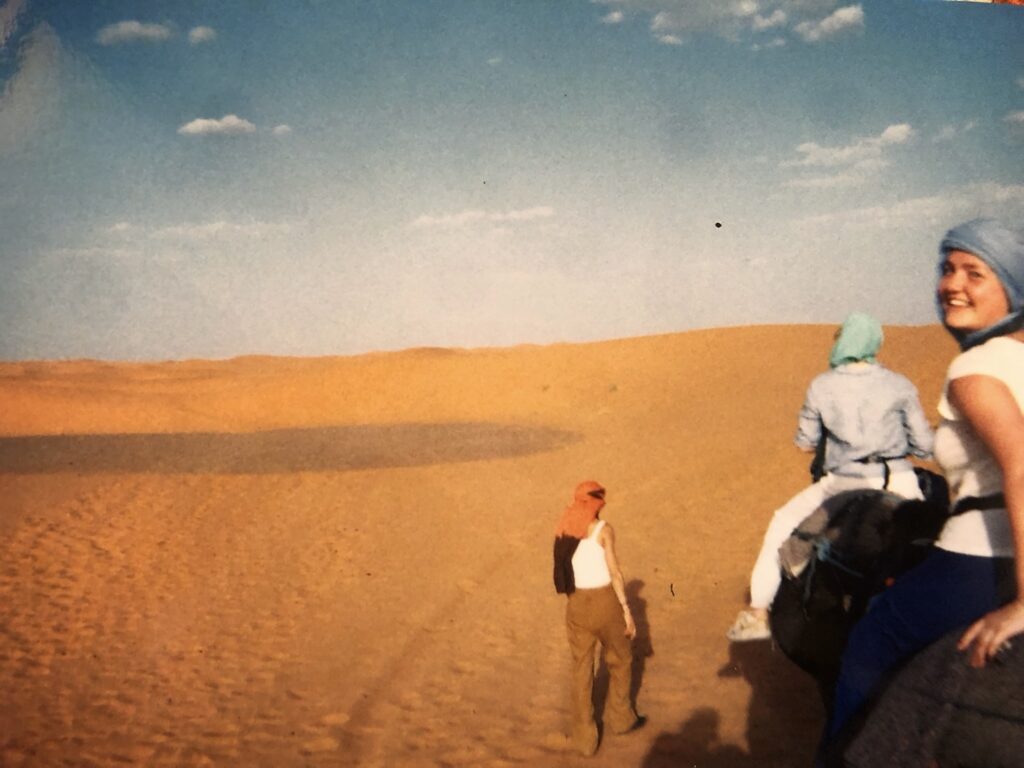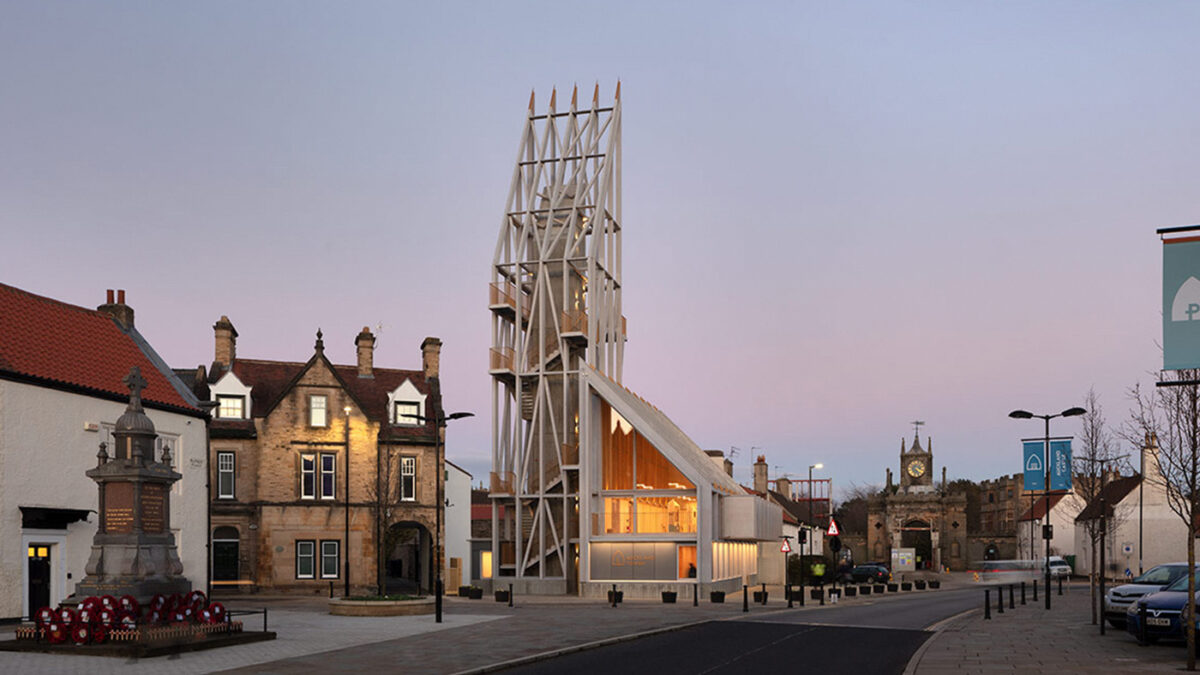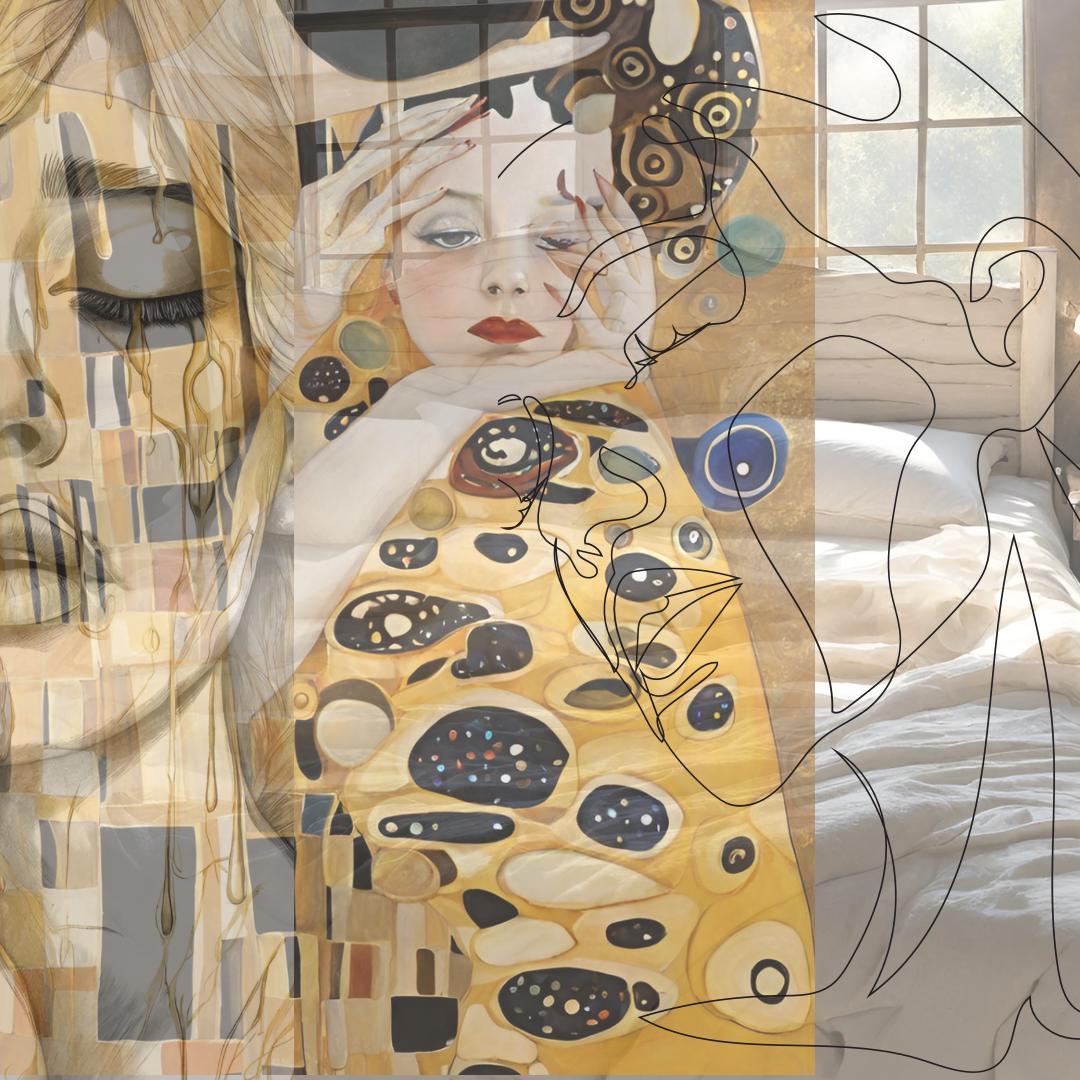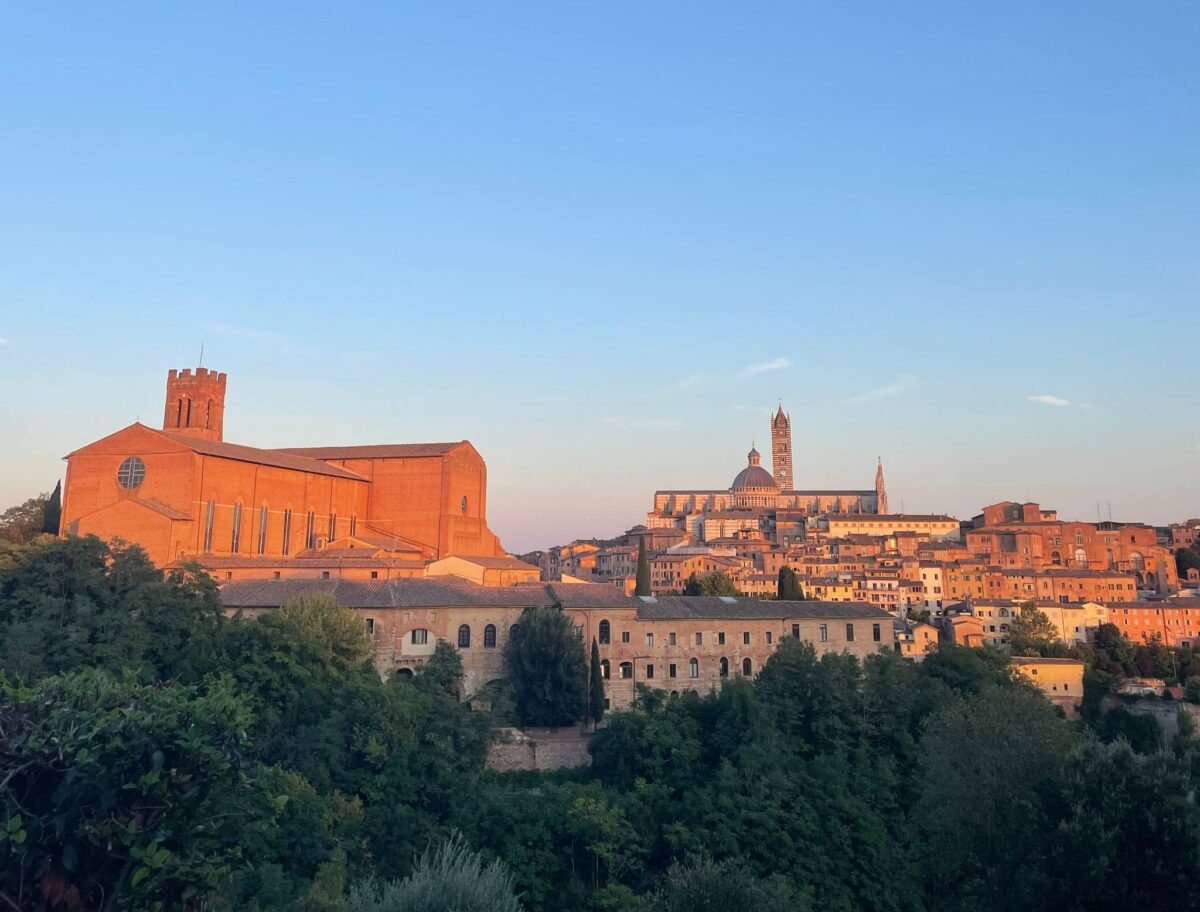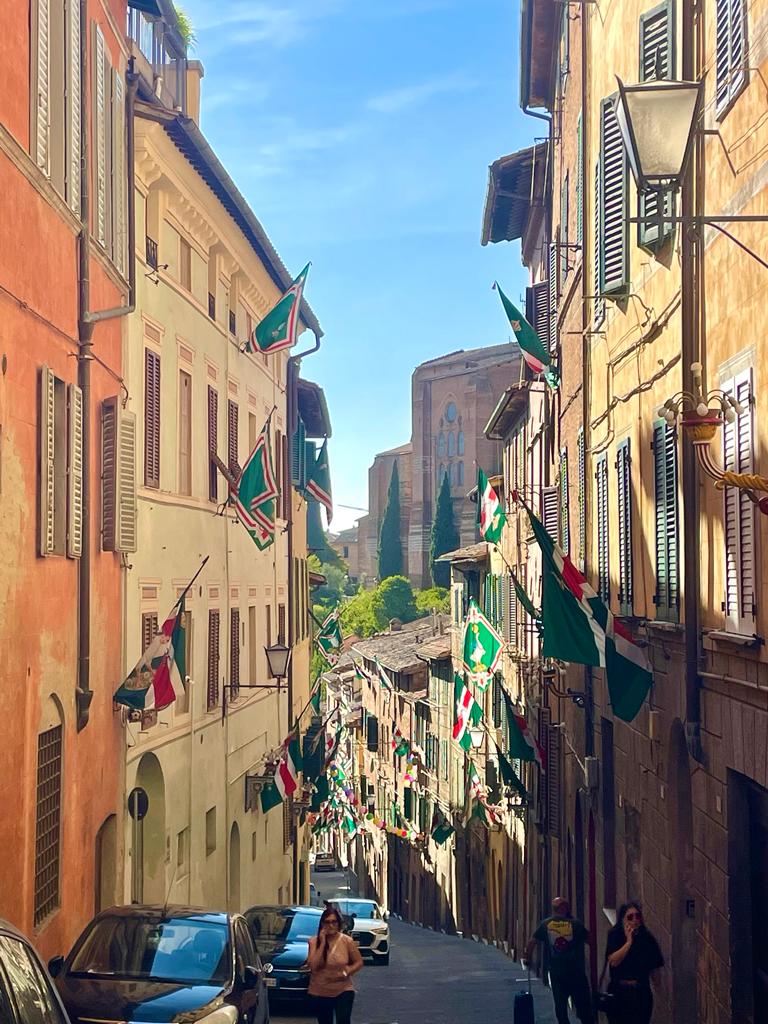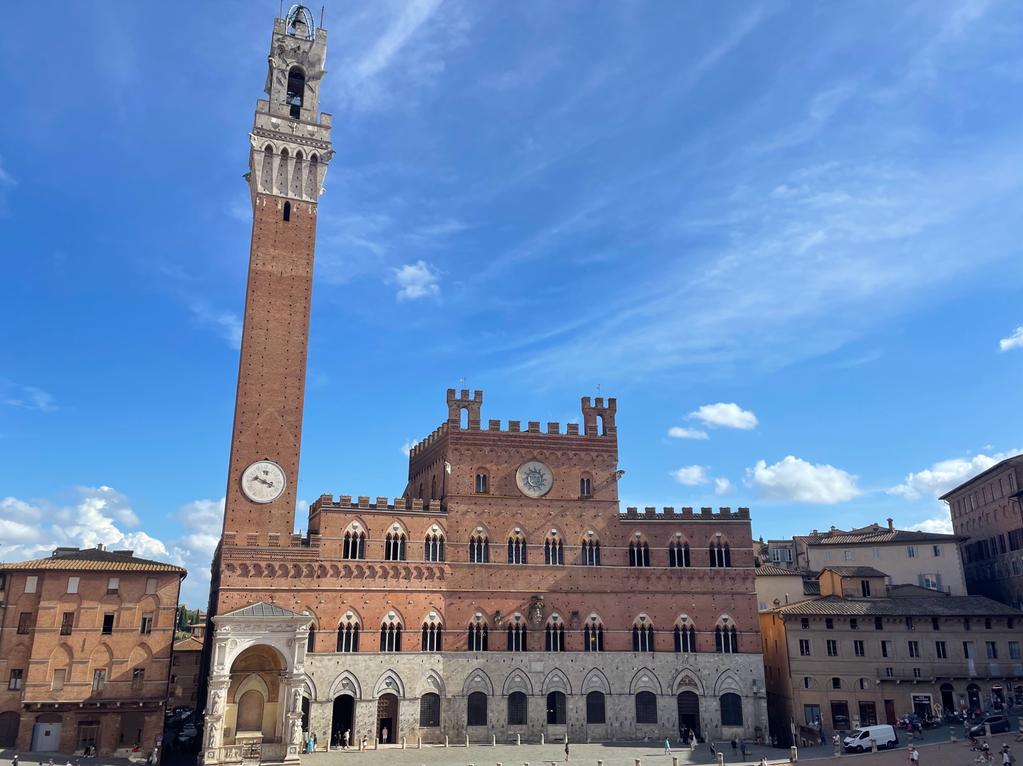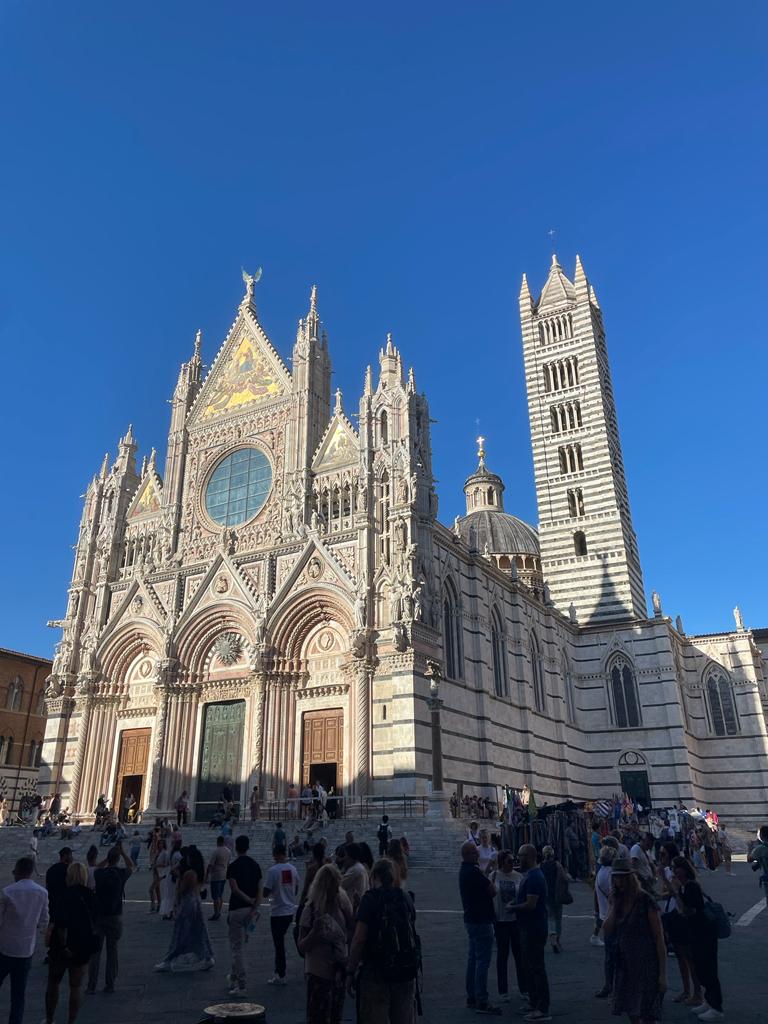By Cosmo Adair & Maggie Baring.
Bishop Auckland, November 29th — grey with a smattering of drizzle. Standing in the town square, it’s obvious that this isn’t a typical, left-regional town. In the windows of an old, listed, one-time bank, characters from paintings jest with one another, speech bubbles spilling from their mouths onto a dark, tenebrous background. That’s The Spanish Gallery, home to pictures by Murillo, Velazquez and El Greco. Then, ahead, there’s a strange, church-like building — modern, in the openness of its glass and steel, but hinting at times past in its striving Gothic upwardness. That’s Auckland Tower.
What’s this all doing here? It’s here because Bishop Auckland is home to The Auckland Project: an ambitious regeneration project, instigated by philanthropist Jonathan Ruffer. Passing the tower, we can see him standing on the doorstep of Auckland Castle’s Gatehouse, which he has made his home, waiting for us. He wears an old v-neck jersey over a checked shirt. He greets us with an instinctive, avuncular kindness which is almost disarming. Ruffer behaves as I had once expected University professors might — prone to mental flight, all the while retaining a formidable intellectual sharpness. He seems to belong to an England of yore, one of ‘the old maids biking to Holy Communion through the mists of the autumn morning’ which Orwell so vividly described. But he is simultaneously a very modern man: his wealth comes from finance, with his firm Ruffer Investment Company listed on the FTSE 250, and The Auckland Project is not quite as quixotic as the tendency to focus on its promotion of Spanish Art would suggest. He is not some Aristocrat of yore spilling cash in the belief that what the North really needs is an exposure to Spanish Art: no, he is motivated by his belief that County Durham needs considerable investment and education in order to kickstart the local economy, create employment opportunities, and in doing so remind the region of its local identity and hopefully encourage its citizens to take more pride in that.
Ruffer was born in the Northeast of England in 1951. His father was a sea-going Royal Marine during World War II, and he met Ruffer’s mother whilst his ship was being repaired in Newcastle. They settled down just south of Middlesbrough. Ruffer would later attend Cambridge University, where he studied English Literature, despite the fact that ‘[he] didn’t ever discover where the English department was’: something I questioned, at first, given his impressive erudition. He ended up in the City where, he claims, his degree came in handy, given that ‘English is an everyman subject, and losing money in investments is an everyman subject as well.’ To call him ‘successful’ would be an understatement; he went on to become one of the country’s wealthiest men. But inspired by a ‘coup de foudre’ — related, no doubt, to his Christian faith — he decided that ‘What [he] wanted to do was to change the emphasis of [his] life, and the form that took was to be involved in regeneration somewhere in the Northeast.’ Thus followed The Auckland Project.
Bishop Auckland was not always the inevitable location, but County Durham certainly was. Because, he remarks, whereas Northumberland and Yorkshire still possess a distinct local character, ‘County Durham has lost the sense of who it is.’ And so when the Church of England decided to sell off Auckland Castle and its famous Zurbaran pictures, he went one better: he bought the castle as well. Here was a town in County Durham, rich in history and in possession of some important but little-known Spanish Golden Age pictures — and Ruffer had for a long while been a devoted admirer of both Baroque Art and Spain. It has also ‘turned out to be, strategically, a really astute place.’ It might only have a population of 25,000, ‘but the catchment area is 125,000 and if you look at its sphere of influence, it’s about 350,000 which is bigger than Cardiff. So, in other words, if Bishop Auckland improves, then actually more than half of County Durham improves.’
His Christianity and his interest in Art are both important in the direction which The Auckland Project has taken. Much has been said before of the relationship between Religion and Art, but we were both quite spellbound by the acuity of how he described his understanding of it.
He refers to himself as “Goddy” — a rather charming, if English, manner of lightly and inoffensively describing such a life-defining belief. “I do think … that for all of us as human beings, there are things that define the nature of who we are. And one of them is power, one of them is sex, one of them is money, and one of them is faith. Now … if you look at Victorian times, what you’ll find is that nobody ever talked about sex, but if they put up a new building, the foundation stones would start with the words, ‘to the Glory of God.’ Now, today, it’s the exact inverse of that … and everybody is very happy to talk about sex. But, in fact, these are fundamental things that drive us, and it is simply that at the moment, that element is in the shadows, but it doesn’t go away.’
If Faith, then, is so important, what is its object? ‘It’s to encounter something bigger than yourself. And clearly, the Christian God is like looking at a burning sun without any shade. It’s agonisingly painful to do, because it’s just such a powerful and intense and concentrated thing.’ How, then, do we approach the unapproachable? For Ruffer, we approach it through art, which for him is ‘not the light of the sun, but the light of the moon. The moon isn’t overpowering; moonlight is caressing. It woos you and settles you. But what we know from physics is that moonlight is actually the same as sunlight; they both come from the same place. So I don’t feel, at all, that when I’m talking about art or when I’m talking about the Christian God, that I’m really talking about different things at all.”
There’s one acquisition which he’s especially focussed on: that’s St. Paul’s Burning of the Hebrew Books, a tapestry by Pieter Coecke van Aelst. It ought to be in the UK because of how well it conforms to the Waverley Criteria, the process by which an object might be deemed a ‘national treasure.’ These are: Is it closely connected with our history and national life? Is it of outstanding aesthetic importance? Is it of outstanding significance for the study of some particular branch of art, learning or history? To Ruffer, the tapestry ticks all three boxes. In fact, he believes that only the coronation spoon is of equivalent importance.
It was made for Henry VIII during the Reformation. It depicts St. Paul to symbolically represent a break from Rome, where St. Peter and the Petrine liturgy were dominant. But, historically, the liturgy in England had been Pauline, and so Henry’s ‘effectively saying the Pope is the head of the One Church, but I’m the head of the other church. And so the rest of the depiction which is the burning of the heathen books is a quotation of what St. Paul did in Ephesus in Acts. And what Henry was doing was saying, ‘I’ve done that, I’ve burned all the Tyndale bibles, killed a few of them too.’ Here, again, Ruffer excels: he explains church history and a complicated artistic work in a way that’s both rigorous and accessible.
The problem is, however, that this tapestry is in Spain. It had been missing since 1770 when it disappeared from Hampton Court Palace until it turned up with a dealer who ‘worked out that this was the thing which had gone missing in 1770, whereupon the Spanish Minister of Culture slapped on an export ban. And so that’s what [he’s] fighting.’ So far, his campaign’s going well. ‘We’ve got both archbishops, the top four bishops: Canterbury, York, London and Durham. And we’ve got Prime Ministers behind us, and we’ve got Wayzgoose behind us,’ he jokes.
Naively, we ask whether he has any Spanish connections who could help him out. ‘Yes, yes, I mean I’m a trustee of the Prado. And I must say one of the things I’m quite allergic to is titles, you know, people who go around … saying ‘I’ve got an OBE.’ But … one of the things which did randomly come my way is I’m a Spanish Knight, I’m an Encomienda of the Order of Isabel the Catholic, Isabella la Cattolic, who is Catherine of Aragon’s mum, so I play that one for all it’s worth. But I’m about as Spanish as an English mousetrap.’ Given his connections, and given what he has managed to acquire so far, I have a feeling that the Encomienda Ruffer will acquire the tapestry eventually. And much like the Greeks awaiting the return of the Elgin Marbles, he has set up The Faith Museum, which awaits the return of the tapestry. ‘Its temperature and humidity are controlled, which costs some millions to do, with nothing in it … we’ve got what those historical old palaces and the V&A haven’t got, [which is] somewhere suitable to put it.
Our discussion drew to an end. Initially, we had been booked in for a half-an-hour chat but he kept us for an hour and fifteen minutes in a thrilling, wide-ranging discussion. Coming away, one thing struck both of us about him: it was the sheer thrill and interest he took in other people. Throughout our session, he asked about us, about the magazine, about university, and about where we both grew up. This was not some elaborate diversion tactic, but a reflection of his natural curiosity. He treated us with a seriousness that made it feel — at least for us — as if he did not differentiate between The Times, The Telegraph, and Wayzgoose Magazine. He is so passionate about his project that he would take hours to proselytise anyone — from the Prime Minister to a Student Journalist — about the importance of what The Auckland Project is getting up to.
But this welcoming curiosity of his extends beyond mere journos. Later, chatting to one of the gallery attendants about Jonathan, we said how impressed we’d been by this aspect of him. To which, she simply replied: ‘That’s Jonathan for you.’ Which, I think, it really is.

